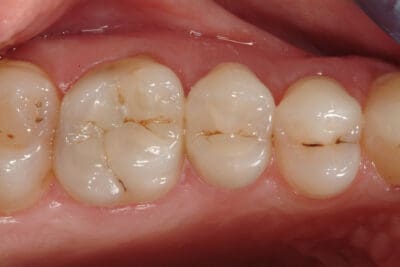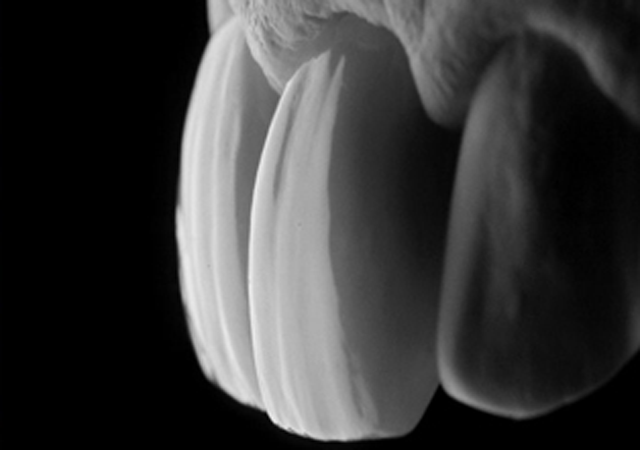
At its core, biomimetic dentistry is about restoring teeth in a way that closely mirrors their natural form and function. The approach emphasizes the use of materials and methods that emulate the tooth’s inherent characteristics, such as its biological, functional, aesthetic, and biomechanical properties. By doing so, biomimetic dentistry aims to maintain the vitality of the pulp and conserve as much of the natural tooth structure as possible, leading to healthier and more durable dental restorations.
This method is particularly beneficial in restorative and aesthetic dentistry but is versatile enough to be applied across various dental disciplines. The goal is to achieve restorations that not only look and feel like natural teeth but also perform similarly, thereby enhancing the overall health and longevity of the patient’s dental work.
What Are the Advantages of Biomimetic Dentistry?
Biomimetic dentistry offers numerous advantages, including:
-
- Increased Bond Strength: Biomimetic techniques can increase bond strength by up to 400%.
-
- Preservation of Tooth Structure: Minimally invasive treatment approaches help preserve the natural tooth structure.
-
- Reduced Need for Crowns: Minimizes excessive preparation of teeth, reducing the need for crowns.
-
- Minimized Root Canal Treatments: Can decrease the need for root canal treatments by 90-95%.
-
- Prevention of Catastrophic Failures: Helps prevent major dental failures.
-
- Elimination of Post-Op Pain and Sensitivity: Reduces the likelihood of post-operative pain and sensitivity.
-
- Restoration of Severely Damaged Teeth: Can restore badly damaged teeth that might otherwise be considered un-restorable.
How Long Do Biomimetic Procedures Take?
The duration of biomimetic procedures can vary depending on the operator. However, the best treatments typically take more time. Biomimetic restorations require excellent isolation, meticulous caries removal, and special adhesive application techniques, all of which can increase the treatment time. Despite taking longer, biomimetic restorations usually last significantly longer than traditional restorations and experience fewer complications and symptoms.
What Techniques Are Used in Biomimetic Dentistry?
Biomimetic dentistry utilizes a range of advanced techniques and materials to achieve optimal results. These include:
-
- Adhesive Bonding: High-strength adhesives that bond restorations to tooth structures, mimicking natural tooth properties.
-
- Minimally Invasive Preparations: Techniques that remove only the decayed or damaged part of the tooth, preserving as much healthy structure as possible.
-
- Layered Composite Resins: Materials that closely resemble the natural tooth structure, providing both strength and esthetics.
-
- Stress-Reduced Layering Techniques: Methods that minimize stress on the tooth during restoration, reducing the risk of fractures.
Who Can Benefit from Biomimetic Dentistry?
Biomimetic dentistry is beneficial for a wide range of patients, including:
-
- Individuals with Severely Damaged Teeth: Those with extensive decay or damage can benefit from restorations that mimic natural tooth structure.
-
- Patients Seeking Aesthetic Improvements: Biomimetic techniques can provide natural-looking restorations that enhance the smile.
-
- People Looking to Avoid Root Canals: By preserving more of the natural tooth structure, biomimetic dentistry can reduce the need for root canal treatments.
-
- Anyone Wanting Long-Lasting Results: Biomimetic restorations are designed to last longer and perform better than traditional methods.
How Does Biomimetic Dentistry Compare to Traditional Dentistry?

Compared to traditional dentistry, biomimetic dentistry offers several key benefits:
-
- Focus on Preservation: Traditional methods often involve more extensive removal of tooth structure, while biomimetic techniques aim to preserve as much as possible.
-
- Enhanced Durability: Biomimetic restorations are designed to last longer and resist common issues like fractures and decay.
-
- Natural Aesthetics: The materials and techniques used in biomimetic dentistry are chosen to closely mimic the appearance and function of natural teeth.
-
- Reduced Complications: Patients experience fewer complications such as sensitivity and pain with biomimetic restorations.
How Learning Biomimetic Dentistry Benefits Dentists and Their Patients
Biomimetic dentistry not only revolutionizes the way dental restorations are performed but also offers significant advantages for both dentists and their patients. By mastering biomimetic techniques, dentists can enhance their practice and provide superior care.
Enhanced Patient Satisfaction
Learning biomimetic dentistry enables dentists to deliver restorations that closely mimic the natural teeth in appearance and function. This leads to higher patient satisfaction due to the natural look and feel of the treatments. Patients experience fewer complications, such as post-operative sensitivity and pain, resulting in a more positive overall experience.
Improved Treatment Longevity
Biomimetic restorations are designed to be durable and long-lasting. Dentists trained in biomimetic techniques can create restorations that withstand the test of time, reducing the need for frequent repairs or replacements. This longevity benefits patients by providing lasting solutions and enhances the dentist’s reputation for high-quality care.
Preservation of Tooth Structure
A core principle of biomimetic dentistry is the preservation of as much natural tooth structure as possible. Dentists who adopt these techniques can offer minimally invasive treatments that maintain the integrity of the patient’s natural teeth. This approach not only promotes better dental health but also aligns with the growing patient preference for conservative treatment options.
Reduction in Root Canal Treatments
By focusing on techniques that preserve pulp vitality, biomimetic dentistry can significantly reduce the need for root canal treatments. Dentists can prevent the extensive drilling and tooth removal associated with traditional methods, offering a less invasive alternative that protects the patient’s natural tooth.
Increased Professional Skills and Knowledge
Dentists who learn and apply biomimetic principles gain advanced skills and knowledge that set them apart from their peers. This specialized expertise can open up new opportunities for professional growth and attract patients seeking cutting-edge dental care. Additionally, staying at the forefront of dental innovations enhances the dentist’s ability to provide the best possible care.
Better Clinical Outcomes
With a focus on mimicking natural tooth properties, biomimetic dentistry leads to better clinical outcomes. Dentists can achieve stronger, more resilient restorations that function like natural teeth, minimizing the risk of fractures and failures. This results in healthier, more satisfied patients who enjoy the benefits of high-quality dental care.
By incorporating biomimetic dentistry into their practice, dentists can offer their patients state-of-the-art treatments that prioritize natural tooth preservation, durability, and overall dental health. This progressive approach not only improves patient outcomes but also elevates the dentist’s practice to new heights of excellence.
Learn Biomimetics at IDEA!

Join us at IDEA to master the innovative techniques of biomimetic dentistry under the guidance of Dr. Didier Dietschi, a pioneer in adhesive and esthetic restorations. Our comprehensive course, Bonded Posterior Restorations, covers all aspects of tooth-colored direct and indirect restorative protocols, focusing on bio-mechanically fragilized teeth, like cracked and non-vital teeth. Gain advanced skills in esthetic restorative dentistry, learn minimally invasive techniques, and enhance your patient care with proven, long-lasting results.
Dr. Dietschi’s expertise, backed by over 35 years of clinical practice and numerous accolades, ensures you receive top-tier education. Elevate your practice, achieve predictable and stable treatment outcomes, and join the forefront of modern adhesive dentistry. Sign up now to experience one of the most engaging and career-transforming courses in restorative dentistry at IDEA.
